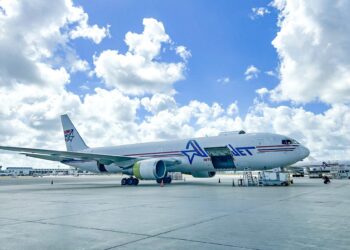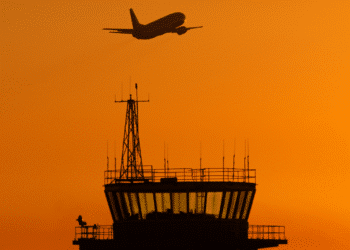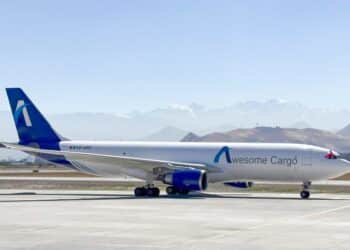Atlas reports an exceptional first quarter, and ups full-year guidance
 Atlas Air Worldwide Holdings (AAWW) reported first-quarter net income of $9.6 million, up from a reported loss of $752,000 a year earlier. Adjusting for a variety of one-time impacts, net income was up 187.4% y-o-y to 23.8 million, while total revenue rose 24.1% to $590 million. Operating income for the quarter jumped 68.8% to $40.6 million. Underlying the growth in revenue and income was a strong 28.1% increase in ACMI block hours to almost 50,000, which lifted total block hours 20.6% to well over 66,000.
Atlas Air Worldwide Holdings (AAWW) reported first-quarter net income of $9.6 million, up from a reported loss of $752,000 a year earlier. Adjusting for a variety of one-time impacts, net income was up 187.4% y-o-y to 23.8 million, while total revenue rose 24.1% to $590 million. Operating income for the quarter jumped 68.8% to $40.6 million. Underlying the growth in revenue and income was a strong 28.1% increase in ACMI block hours to almost 50,000, which lifted total block hours 20.6% to well over 66,000.
Looking at the results by operating segment:
ACMI (including CMI): As mentioned above, ACMI block hours increased 28.1% to 49,862, and this, along with an increase average rate per block hour, helped boost segment revenue 32.7% to $266 million. This was partially offset by higher heavy maintenance expense and amortization of deferred maintenance costs, but segment direct contribution nonetheless increased 14.9% to $40.9 million.
The increase in block hours came on the back of increased flying for Amazon, the start-up of 747-400F flying for several new customers, and the redeployment of a 747-8F from the charter segment to ACMI.
On the subject of Amazon, Atlas has now put thirteen freighter-converted 767-300s into service for the e-commerce giant, and says it has secured both feedstock and conversion slots for the remaining seven it agreed to supply – with all seven expected to enter service by the end of this year, as planned.
Charter: Charter revenue was up 16.9% y-o-y in the quarter to $285 million, and segment direct contribution more than doubled to $34.3 million. These gains were primarily driven by an increase in yields and higher aircraft utilization, partially offset by the above-mentioned move of the 747-8F from Charter to ACMI. The increase in Charter block hour rates reflected an increase in yields, higher fuel prices, and “the impact of Charter capacity purchased from ACMI customers.” This last is interesting – Atlas is increasingly buying back unused space on the aircraft it is flying for ACMI customers, and using it for its own charter business. A win-win arrangement.
Dry leasing: As expected, the placement of additional 767-300 freighters with Amazon, and an additional 777F with DHL led to a jump in both revenue and direct contribution. Revenue was up 36.0% to $36.3 million, and direct contribution increased 16.8% to $11.4 million.
Looking ahead, the company increased its guidance for 2018, during which it expects strong growth to continue. The company said it expected full-year 2018 block hours to be up “approximately 19% to around 300,000.” Regarding revenue, AAWW said it expected full-year 2018 revenue to exceed $2.5 billion.
This rosy outlook prompted one of the financial analysts on the conference call this morning to ask how Atlas could be so optimistic about the air freight market when IATA had just published a relatively negative outlook that showed demand growth flattening, and pointed out that the restocking cycle that drove much of the recent demand growth was over. Atlas CEO Bill Flynn’s response was interesting and enlightening. He said that, in his view, the way IATA looked at the market was “unfortunate.” That IATA captured only about 75% of air freight traffic, and that the missing 25% was mostly made up of express, charter, and e-commerce-driven traffic. Not only are these areas the strongest-performing, but they are also where Atlas has focused much of its capacity.




